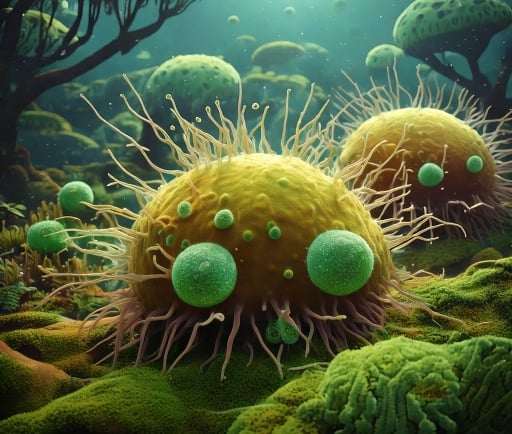Amoebae: Nature's Versatile Microorganisms


Introduction to Amoebae
Amoebae are fascinating single-celled organisms that belong to the group known as protists. Characterized by their ability to move and change shape, these microorganisms are ubiquitous, being found in various environments such as water bodies, soil, and even the air we breathe. Their adaptability and survival strategies have made them a topic of interest in both scientific research and education.
Movement and Feeding Mechanisms
One of the most distinctive features of amoebae is their remarkable mode of locomotion, which involves the formation of pseudopodia, or temporary extensions of their cell membranes. By extending these pseudopods, amoebae can effectively navigate through their environment. This motility is not only crucial for movement but also plays a vital role in their feeding strategies. Amoebae primarily feed through a process known as phagocytosis, where they engulf food particles by surrounding them with their pseudopodia. Once the food is enclosed, it is transported into the cell, where it can be digested.
Amoebae in the Ecosystem
The ecological significance of amoebae cannot be overstated. They are integral components of the microbial food web, serving as both predators and prey within various ecosystems. By consuming bacteria and organic matter, amoebae help in breaking down dead materials, recycling nutrients back into the environment. Additionally, they are utilized in scientific studies as model organisms to understand cellular processes, evolution, and environmental changes.
Conclusion
In summary, amoebae are not just ordinary microorganisms; their unique characteristics, such as the use of pseudopodia for movement and feeding through phagocytosis, make them a vital part of our ecosystems. Their widespread presence in water, soil, and air highlights their adaptability and importance in maintaining ecological balance. Understanding these remarkable protists can provide insights into the intricate web of life that encompasses many small yet essential contributors to our environment.
